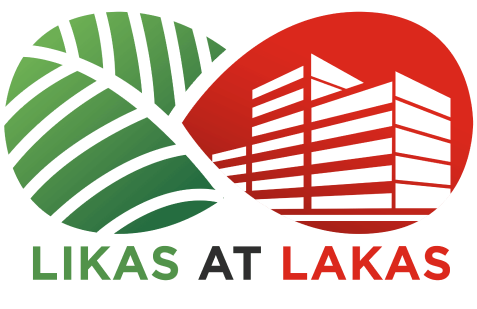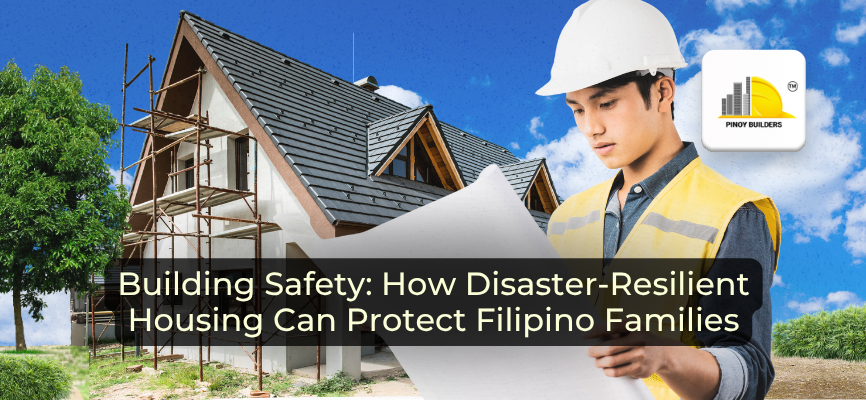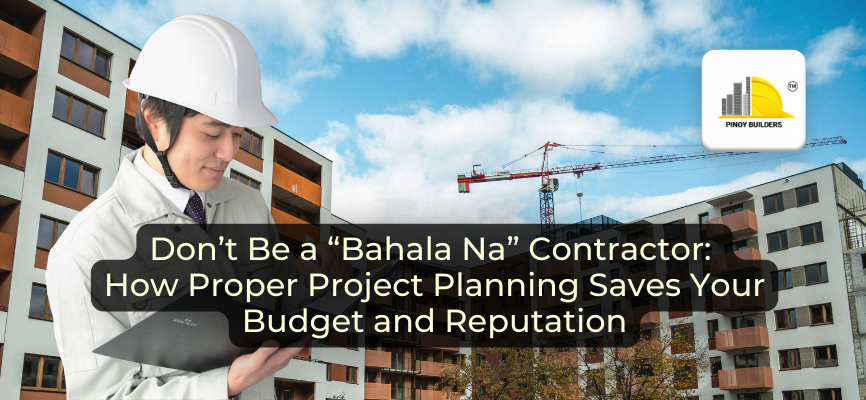Every year, Filipinos brace for natural disasters.
This reality has only grown heavier with time. Climate change and poor flood control practices have added to the burden, fueling the constant worry over nature’s fury: destroyed properties, lost harvests, and, in the worst cases, families torn apart by floods, landslides, or earthquakes.
Unfortunately, these scenes are far too familiar to us. Sitting in the Typhoon Belt and the Ring of Fire, the Philippines faces extreme typhoons that tear through coastlines, earthquakes that rattle cities, and floods that engulf entire neighborhoods. We endure these situations year after year because resilience is ingrained in us, but what about our structures that often fail to meet the same standard?
Authorities may label these disasters the “new normal,” urging acceptance of devastating consequences, but there is no reason to settle. Disaster-resilient structures exist, and they should be adopted across the country, beginning with the Filipino home.
Disaster-resilient housing offers protection, security, and peace of mind. Stronger foundations, safer materials, and risk-informed, innovative designs can make the difference between survival and devastation. To understand how these structures can better protect Filipino families—and how we can build them for long-term safety and stability—we spoke with Ms. Samantha Lisay, an architect and advocate for safer housing with Build Change, an international non-profit organization dedicated to safeguarding homes and property for families across Latin America, the Caribbean, and the Asia-Pacific region.
At the core of Build Change’s work is the conviction that everyone should have a resilient home. The organization works to reduce the human and economic toll of earthquakes, extreme weather, and fires by ensuring homes and schools are built to endure. This mission comes alive in Ms. Lisay’s work with marginalized communities, where she has helped families take steps toward owning homes that can truly protect them. Through her professional insights, practical solutions, and stories from the field, she shows us why resilient housing is both urgent and achievable.
Vulnerabilities of Informal Filipino Homes
Many houses owned by the marginalized Filipino homeowners still rely on lightweight and inexpensive materials such as galvanized iron sheets, cheap lumber, and thin plywood. While these allow families to build quickly and affordably, they provide little protection against strong winds, floods, or earthquakes. Studies after Super Typhoon Haiyan in 2013 revealed how these weaknesses played out in real life: over 1.1 million homes were damaged or destroyed, displacing more than 4 million Filipino people. Severe surges almost completely wiped out coastal villages where houses were built on timber piles. But at the same time, masonry and reinforced concrete homes in urbanized areas sustained only minor damage.
A national housing vulnerability index further highlights the issue, identifying factors such as housing density, structural integrity, tenure security, and use of substandard materials as some of the key risks. In many municipalities, families live in crowded settlements where poorly built houses lack proper foundations, beams, or columns. Poverty worsens this cycle — families most affected by disasters often rebuild with the same unsafe materials, leaving them vulnerable to the next typhoon or quake. Ms. Lisay, who has spent much of her career building disaster-resilient homes, has witnessed these patterns repeatedly in her work with Build Change.
“Most of the houses in the communities we visit are self-built. They are not designed or supervised by a licensed professional, so they don’t follow the National Building Code. We often see cracked hollow blocks being reused, houses without beams or columns, and sometimes no foundation at all. Without these basic components, homes are extremely vulnerable to typhoons and earthquakes.”
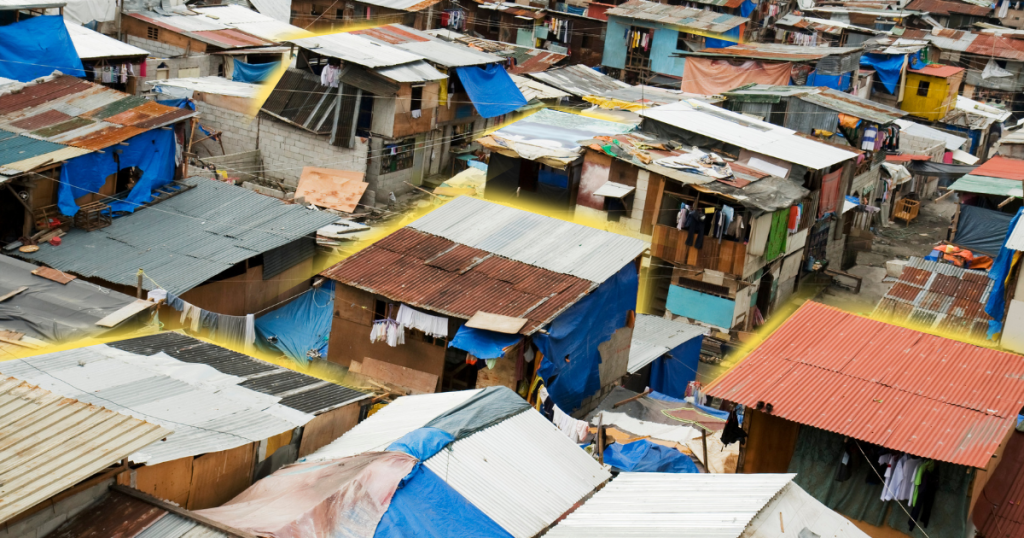
Vulnerability doesn’t stop there. Budget limitations often push families to cut corners, a reality that Ms. Lisay notes is especially evident in informal and marginalized communities across Metro Manila. Overcrowded settlements add another layer of difficulty, as engineers struggle to strengthen homes built tightly side by side with little space in between. Legal issues such as land tenure further complicate rebuilding efforts, leaving families in a cycle of unsafe housing.
“It’s a challenge for us professionals—we cannot do it alone. Our solutions are mostly architectural or engineering. What really makes a difference is working with governments and community members, because at the end of the day, it’s about people management, community engagement, and making sure everyone is involved,” she emphasizes.
Research shows that poverty and household crowdedness significantly increase vulnerability to typhoon hazards. Families with limited income often lack the means to reinforce their homes or repair after disasters, leaving them with reduced adaptive capacity.
Crowded living conditions magnify these risks, particularly since higher poverty rates often correspond with denser households. On the other hand, highly urbanized communities with stronger social networks tend to recover faster, suggesting that social ties can help offset some of the disadvantages of economic constraints.
This highlights that disaster resilience is never only about the strength of walls and roofs. It also involves the socioeconomic conditions that determine whether families can prepare, endure, and recover. Building safer homes must go hand in hand with building stronger communities, something that Build Change and professionals like Ms. Lisay already recognize and continue to work on. Still, we cannot rely solely on them to address these challenges. As Ms. Lisay points out, communities themselves must work together to overcome the vulnerabilities often found in the typical Filipino home.
Building Better: The Principles of Resilient Housing Design
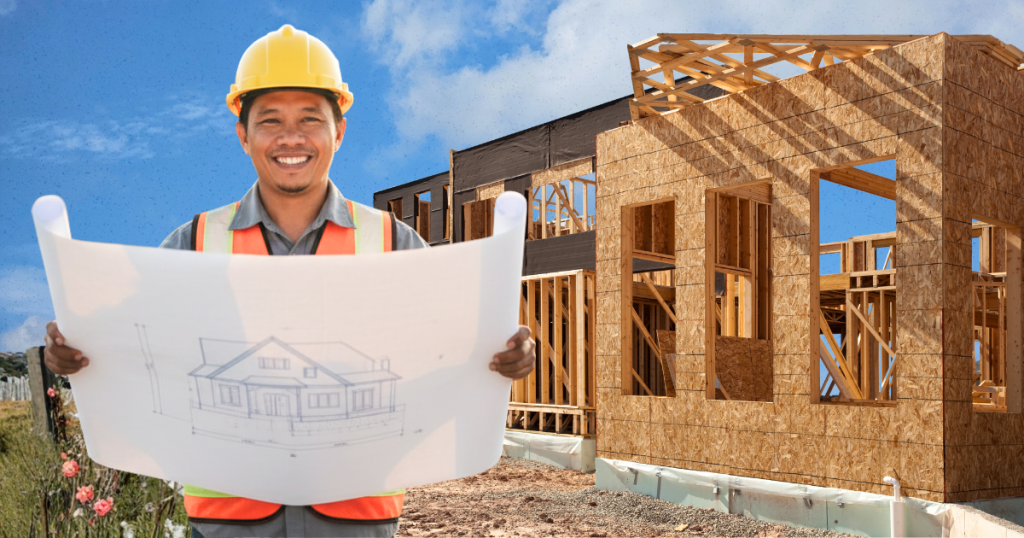
So if a resilient home is not just about sturdy walls or strong roofs, what other factors should we consider? It begins with risk-informed site analysis, according to Ms. Lisay. Assessing risks such as floods and earthquakes before a single brick is laid is most important because the strength of a wall means nothing if it rests on fickle soil. And this resilience extends beyond the physical elements of a building, connecting to communities, ecosystems, and the long-term adaptability of the structure.
To build resilient housing, professionals and homeowners alike must be risk-informed and familiar with sustainable, locally appropriate, and affordable materials, Ms. Lisay emphasizes. This means that it’s ideal to use materials that communities already know how to work with, ensuring repairs and upgrades remain manageable.
Access to basic needs (water, sanitation, and energy) must also be integrated into design, since safe housing should support daily living as much as it does disaster survival. For example, in many cases, houses double as sari-sari stores, so resilience also means enabling families to protect and sustain their livelihoods.
Key principles reinforce these ideas:
- Durability and adaptability ensure that homes can endure immediate shocks while adjusting to long-term climate shifts.
- Diversity and redundancy, such as multiple water or power sources, make communities better able to function when one system fails.
- Simple and flexible systems reduce reliance on complex technology that may break down, favoring solutions that are easier to maintain.
- Locally available resources strengthen self-reliance and reduce dependence on costly or distant materials.
- Community and equity play a central role, as strong social networks often determine whether families can recover quickly after a disaster.
For flood-prone areas, this translates to elevated flooring, proper drainage, and foundations built to withstand water pressure. For earthquake-prone zones, reinforced walls, balanced load distribution, and shear walls help prevent catastrophic collapse.
Ultimately, we must look beyond construction techniques when developing resilient housing design. Being proactive and anticipating interruptions, planning for a dynamic future, and building systems that protect both lives and livelihoods are the most crucial aspects of this. By aligning physical durability with social equity and community strength, resilience becomes not a single standard but a continuous process of adaptation.
Materials and Cost-Effective Solutions for Resilient Structures
We don’t need to spend trillions of pesos on every disaster-resilient structure—not all solutions call for high-end construction. The shift can begin with smaller, practical efforts like building sturdy family homes. Locally available materials can be as effective as traditional materials when used and sourced correctly, Ms. Lisay highlights.
Bamboo and coconut lumber, for example, offer strong potential, but their resilience depends on how they are treated and handled. Practical realities also come into play before these materials are considered disaster-resistant.
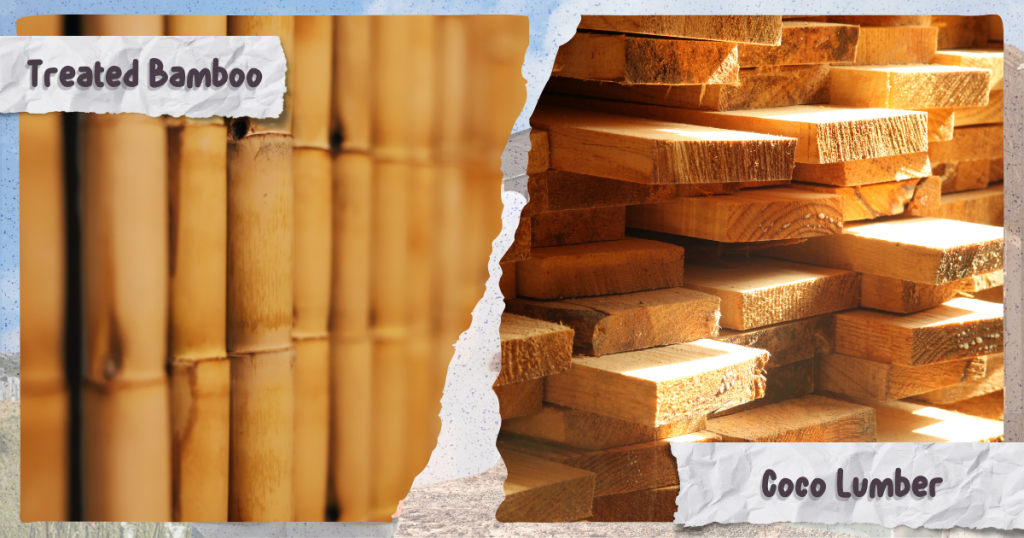
Among the key considerations are:
- Proper treatment for durability – Bamboo and coconut lumber can be strong materials, but they must be properly selected, treated to resist pests, decay, and structural weakness.
- Access to quality supply – Even sustainable materials become costly if local supply chains are weak, forcing families to depend on specialized contractors.
- Community know-how – Technical knowledge at the community level ensures families can build and repair their homes without over-reliance on external expertise.
- Balance of cost and sustainability – Using traditional resources reduces expenses, but only when paired with the right practices that preserve safety and strength.
Maximizing local resources and ensuring they are processed and applied correctly can help communities create affordable and disaster-resilient homes. This balance of cost, safety, and sustainability ensures that resilience remains achievable even for families with limited means.
Taking the Step Toward Resilience
Building a resilient home does not always mean starting over. Minor renovations and upgrades (such as reinforcing walls, securing roofs, and improving drainage systems) can make a significant difference. Ms. Lisay notes that families should prioritize reliable materials and contractors, even when working on do-it-yourself improvements. With many resources available through local suppliers and online guides, informed choices are possible at every budget level.
“There are many resources available online and through local suppliers. Even if families take a do-it-yourself approach for smaller improvements, they should check the reliability of contractors and materials. These small upgrades add up and greatly improve resilience.”
Community-led efforts also amplify these individual steps. In Aurora, Build Change partnered with a microfinance institution to provide families with financing and training for retrofitting. When Typhoon Kristine struck in 2024, the upgraded homes withstood the storm without significant damage. Even houses retrofitted a decade earlier continued to protect families, proving that investing in resilience pays off in the long term.
“I was very happy to receive the info that the houses that we did [in Baler Aurora] survived and were not damaged after the disaster. Even projects completed 8 or 10 years ago continue to endure storms. We’re just very happy that with the little things that we did—the trainings, the materials, technical assistance—we’re able to help them to be safer during the disaster.” Ms. Lisay recalls.
These examples underscore a critical point: resilience is cumulative. Each minor upgrade, whether a reinforced beam, a better roof installation, or improved drainage, adds to a home’s capacity to withstand hazards. Beyond immediate protection, these measures also empower families to expand and strengthen their homes over time, reducing dependence on external aid after disasters that we really have no control over.
The Need for Community and Policy Support
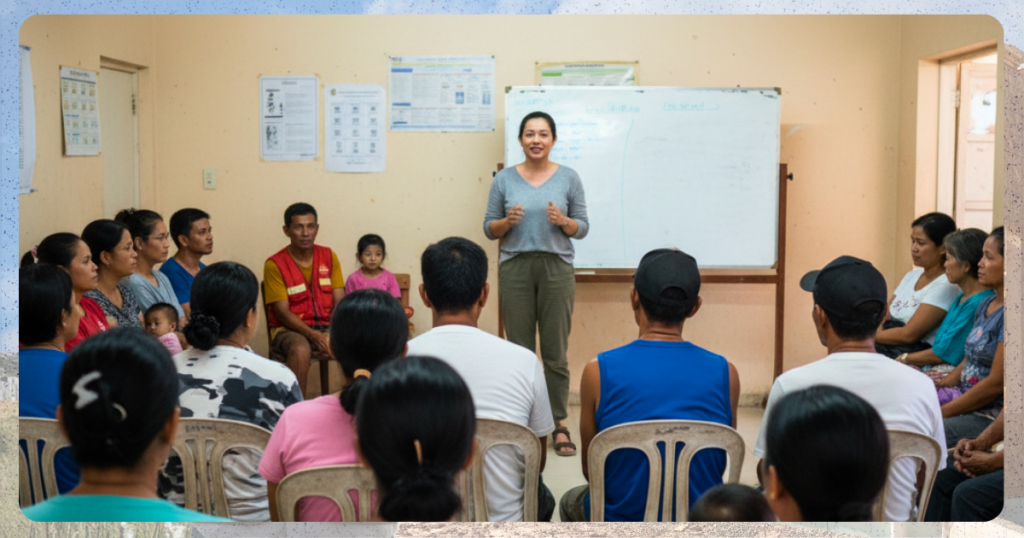
Education and awareness hold the same weight as design and materials. Families must understand not only what makes a house resilient, but also why these measures matter. Without that knowledge, even the most effective solutions risk being overlooked or ignored.
Policies play a critical role in strengthening this awareness. The Philippines has the National Building Code, yet enforcement often collides with economic realities. Many Filipinos skip disaster-resilient home designs because they are not sufficiently mandated, accessible, or affordable.
Ms. Lisay envisions a future where type-designed housing (standardized, pre-approved models for low-income families) can simplify compliance by cutting the time, cost, and complexity of securing permits. Preventive policies emphasizing upgrading existing homes, not just regulating new builds, are just as essential.
Resilience should not rest solely on homeowners, especially for those who cannot afford proper construction materials. A stronger system is needed: government support that makes codes practical, financing institutions that offer affordable credit, and non-profit organizations such as Build Change that weave disaster-resilient construction into their educational programs. When policies and community efforts work together, disaster-ready housing becomes less of an individual burden and more of a shared standard.
The Future of Disaster-Resilient Homes in the Philippines
As climate change intensifies natural hazards, the urgency for resilient housing grows. New materials, sustainable construction techniques, and policy innovations offer hope for the future.
Ms. Lisay shares her hope and outlook for the future of disaster-resiliency in the Philippines:
“In the next decade, I would love to see resilient housing be more climate adaptive in terms of policy and implementation. When I was studying, we didn’t have this much talk about disaster resiliency. So, I would like to see this more ingrained in architecture and engineering education for both professionals and students so that we could be more sustainable for the next generation.”
Emerging technologies in construction, from advanced materials to modular housing systems, can make homes more adaptable. Combining these with community-driven approaches ensures that progress does not leave vulnerable families behind.
Building Homes That Last
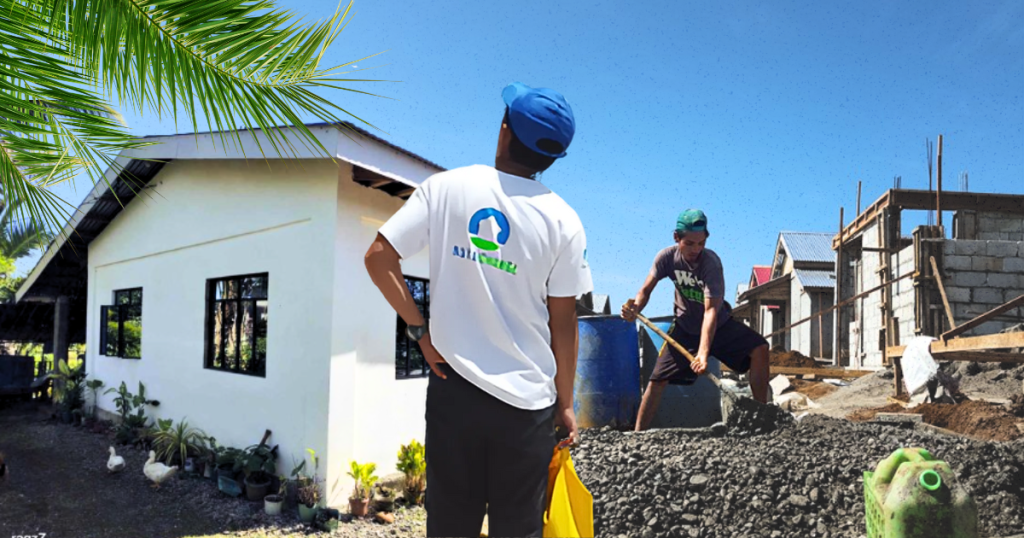
Filipinos are known for resilience, but that does not mean we must accept the constant threat of floods, landslides, earthquakes, and other natural disasters. The Philippines is considered one of the most disaster-prone countries in the world, and many Filipinos still face socio-economic barriers that prevent them from building safe and durable homes capable of withstanding life-threatening challenges.
The drive for solutions often begins with the people themselves. As communities continue to stand firm against issues that worsen flooding across the country, they also find ways to strengthen their homes and properties. For marginalized families, organizations like Build Change and professionals such as Ms. Lisay are making disaster-resilient housing more attainable and realistic in the Philippines.
Resilient housing goes beyond surviving the next typhoon or earthquake. It provides Filipino families with a stable foundation for the future. Through practical design, innovative use of materials, increased homeowner awareness, and supportive policies, disaster-ready homes can move from being the exception to becoming the norm.
Safety is a collective responsibility. Families, communities, governments, and professionals all play a role in creating stronger homes. In a country where disasters are part of daily life, resilience offers more than shelter. It ensures protection, security, and hope for Filipino families.
References:
Chong, R. M. B., Tangunan, D. N., Toyado, D. M., & Elegado, A. F. K. (2025). Evolving disaster resilience in the Philippines: Insights from the 2021 and 2023 World Risk Poll on socio-economic, regional, and systemic factors. International Journal of Disaster Risk Reduction, 121, 105415. https://doi.org/10.1016/j.ijdrr.2025.105415
Healey, S., Lloyd, S., Gray, J., & Opdyke, A. (2022). A census-based housing vulnerability index for typhoon hazards in the Philippines. Progress in Disaster Science, 13, 100211. https://doi.org/10.1016/j.pdisas.2021.100211
Resilient Design Institute. (n.d.). The Resilient Design Principles. Retrieved October 2, 2025, from https://www.resilientdesign.org/the-resilient-design-principles/

